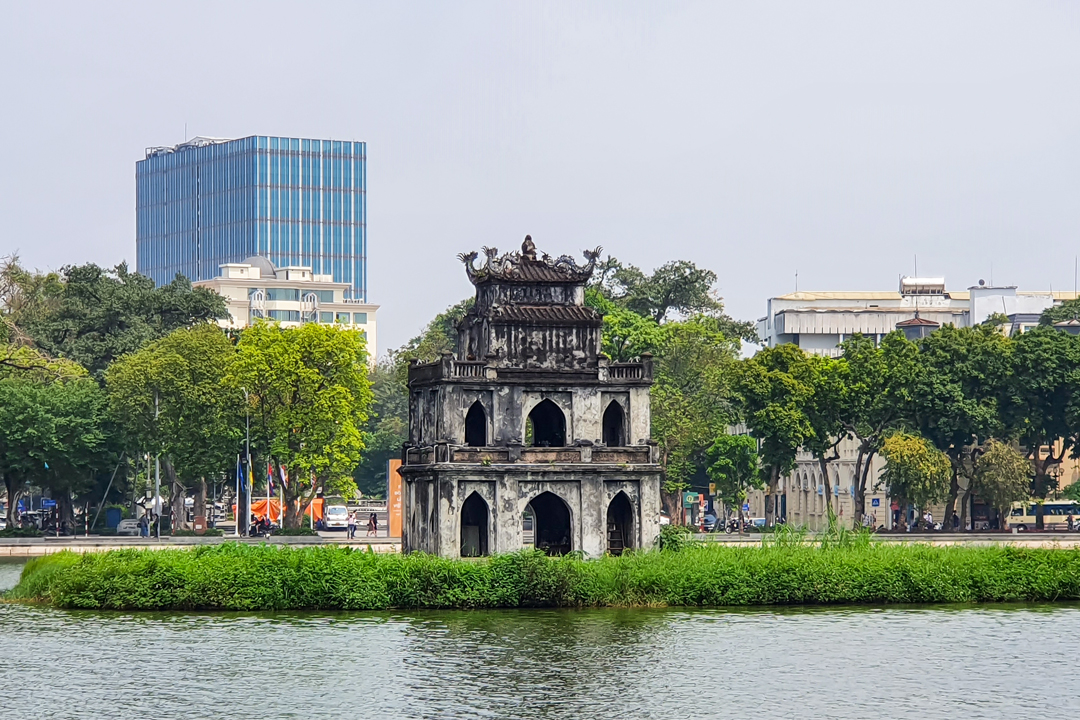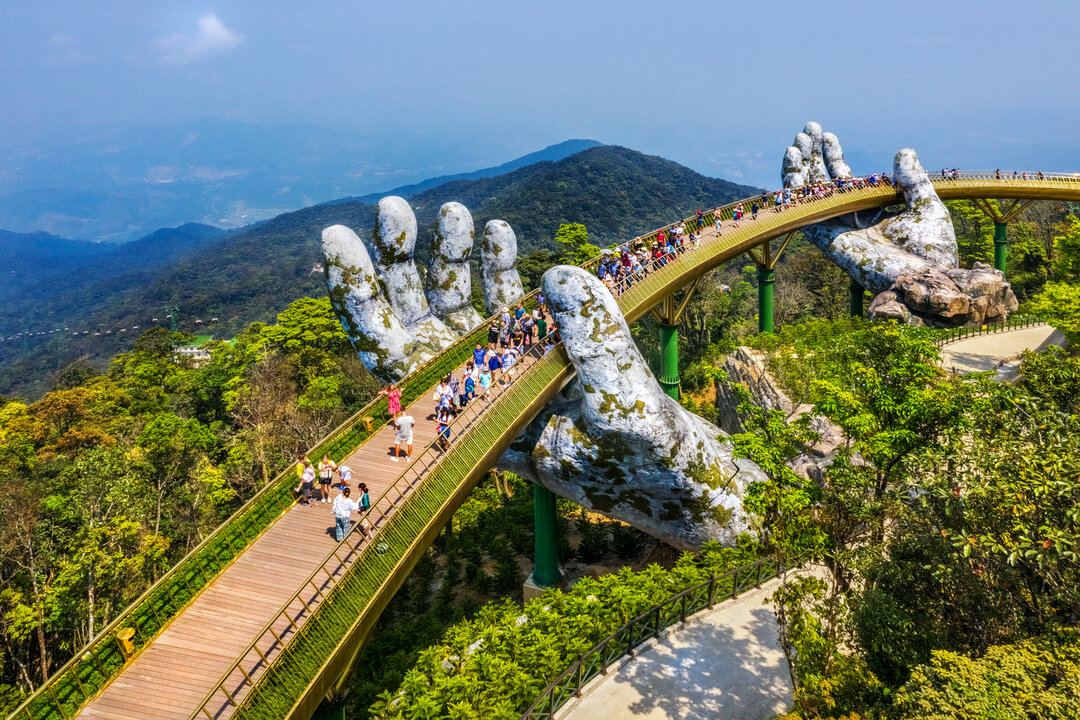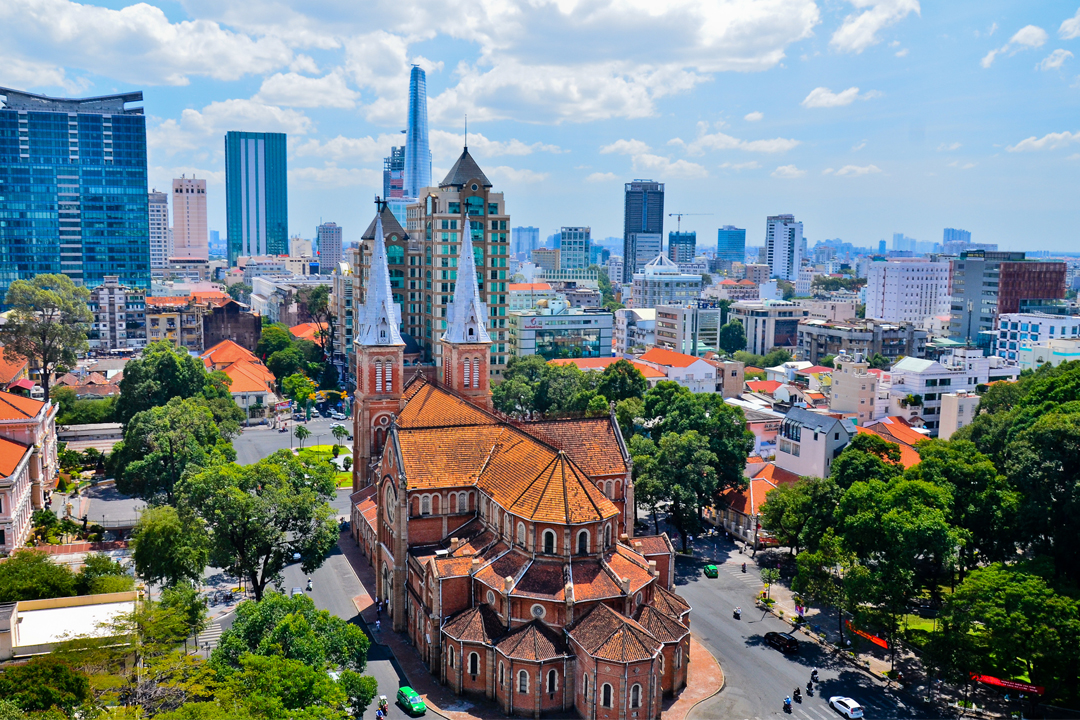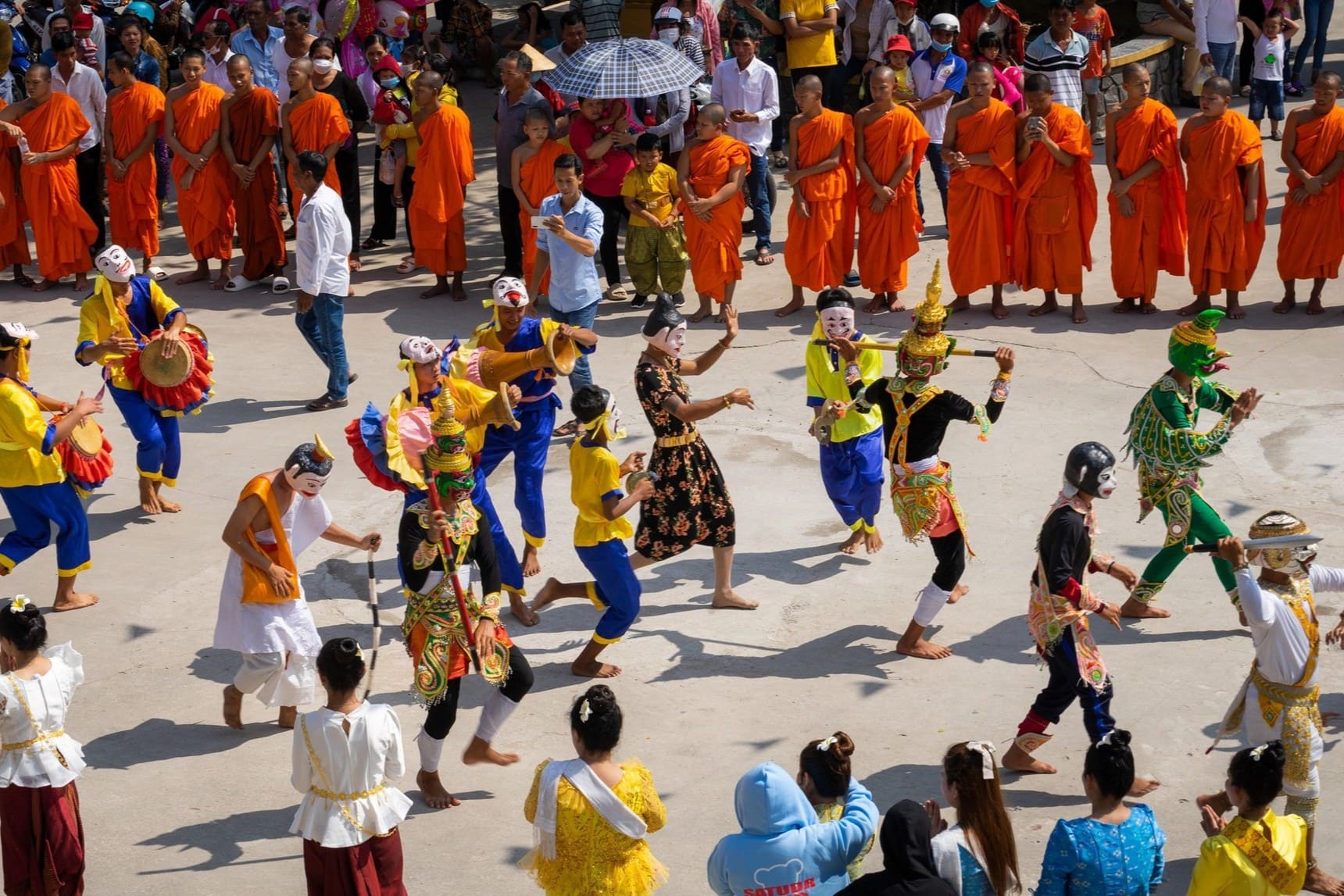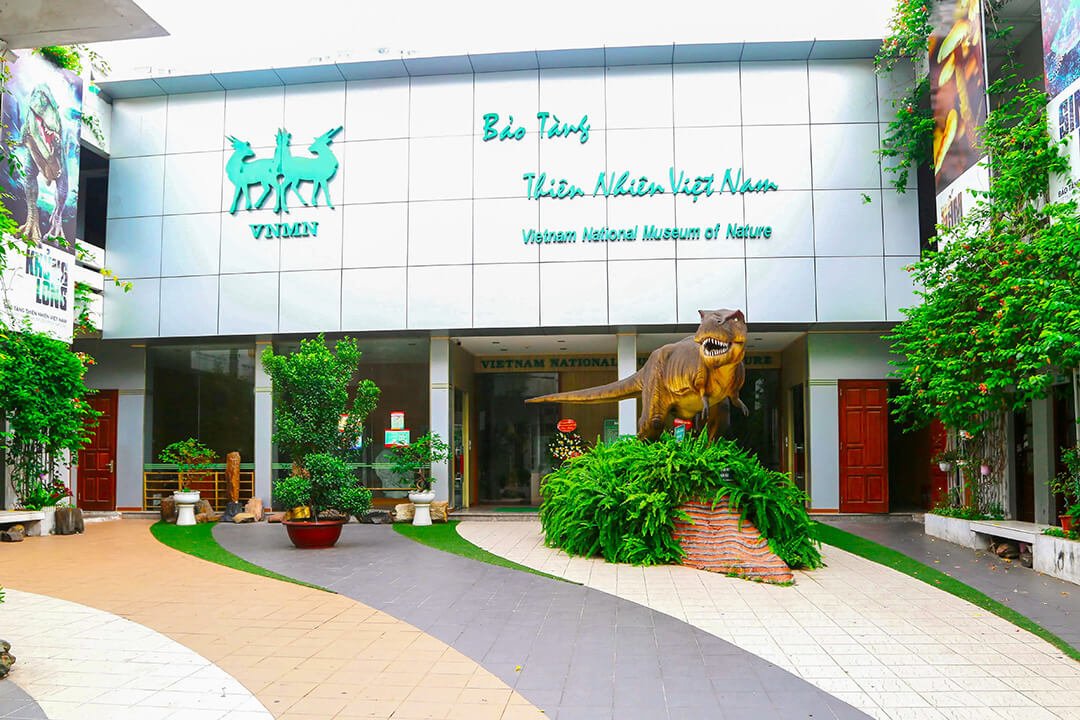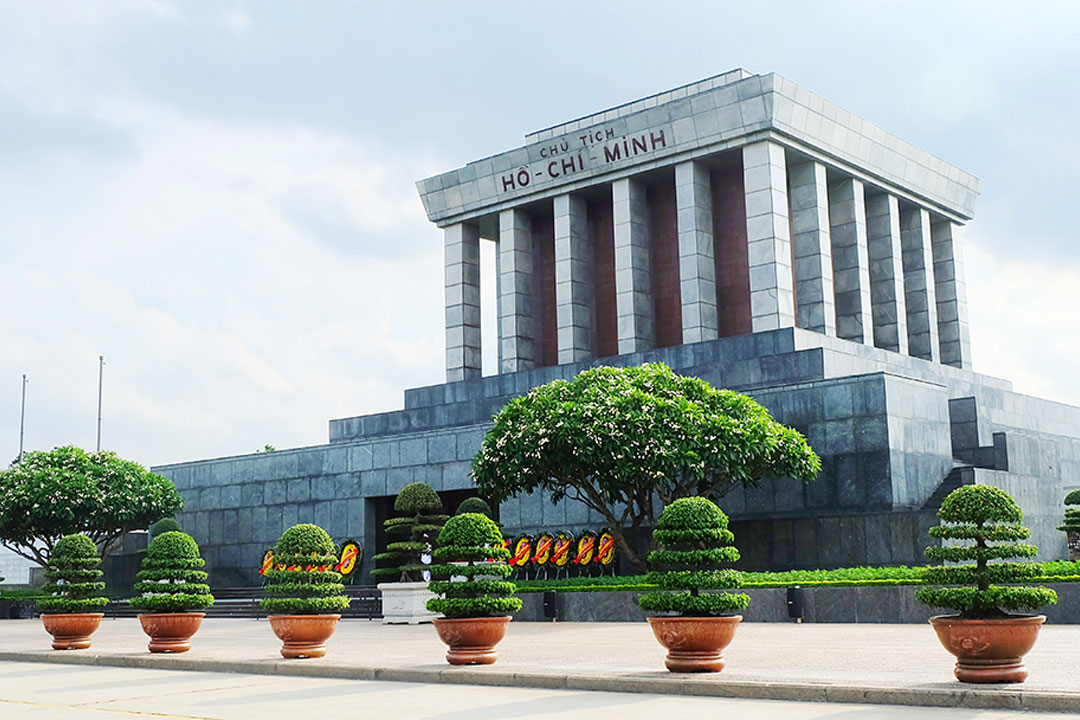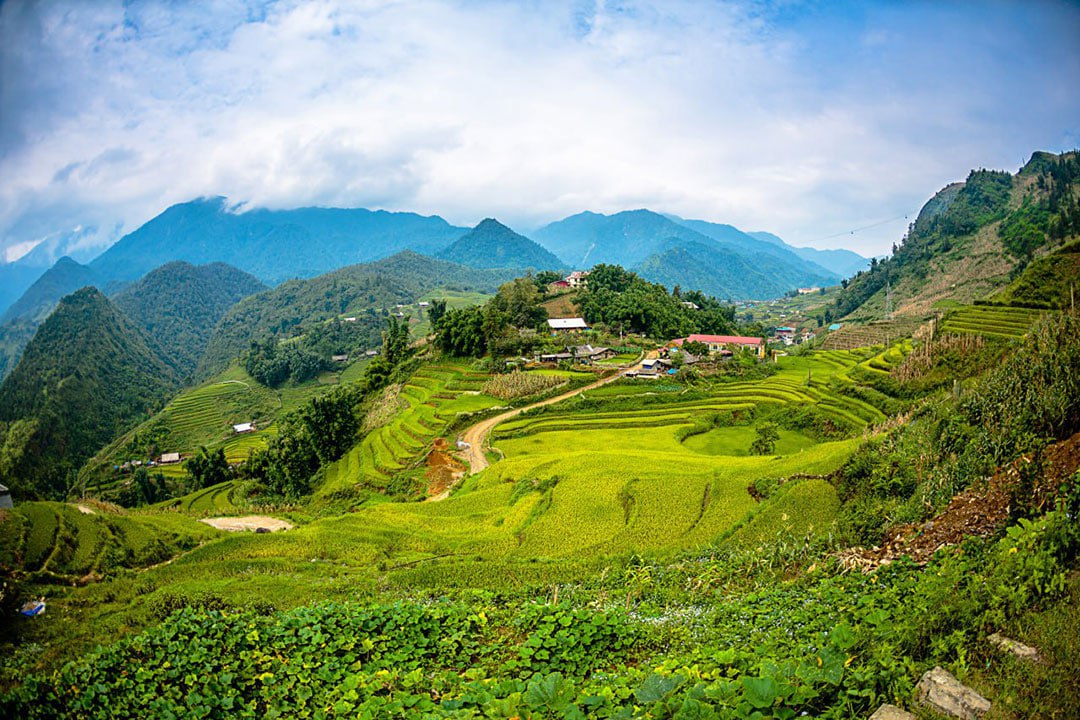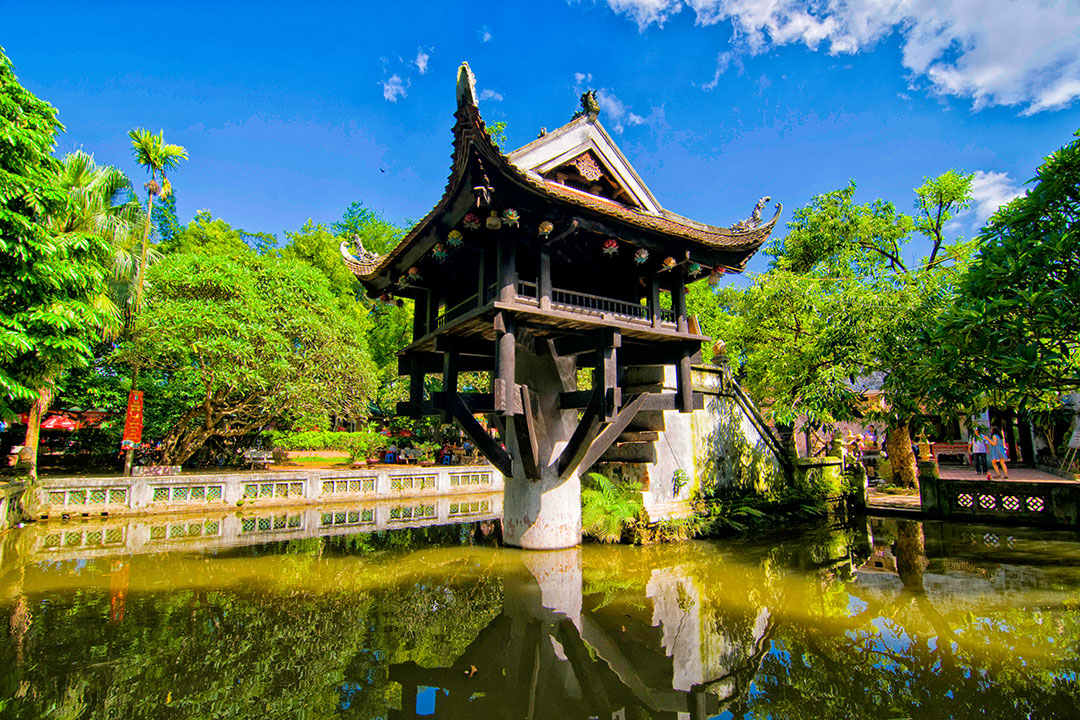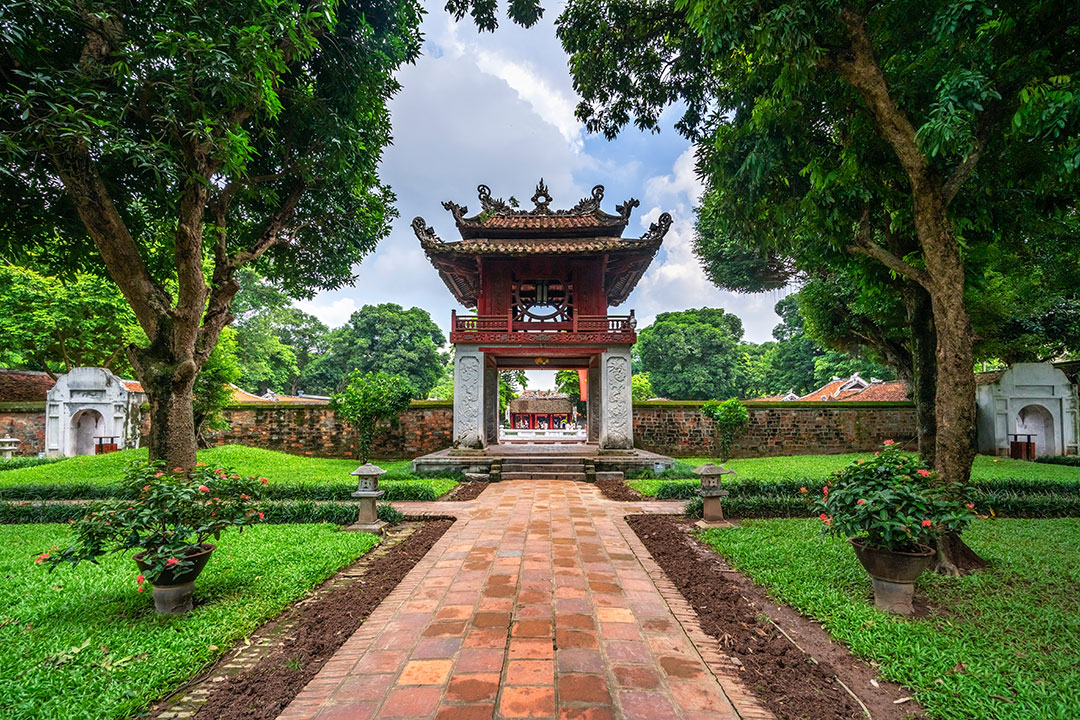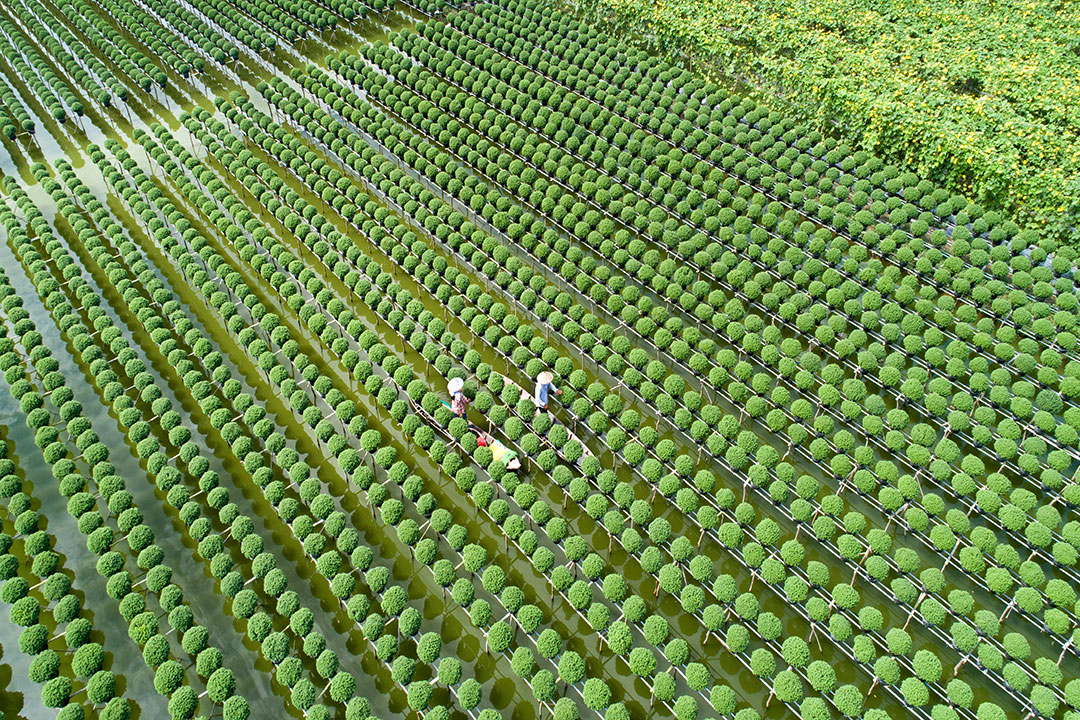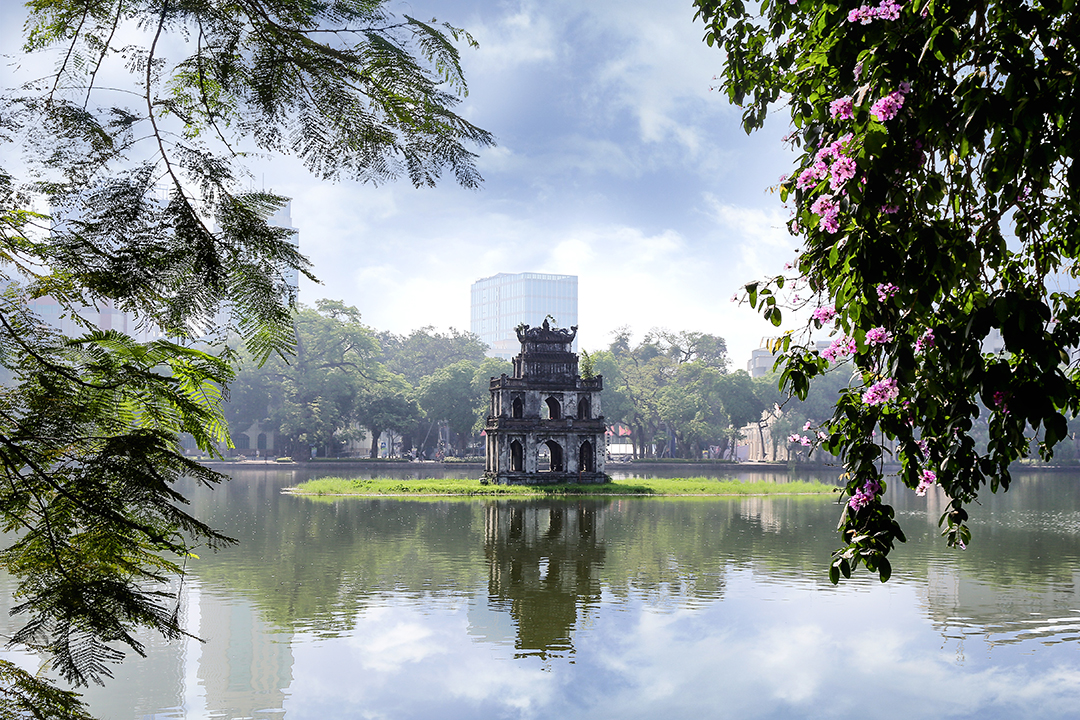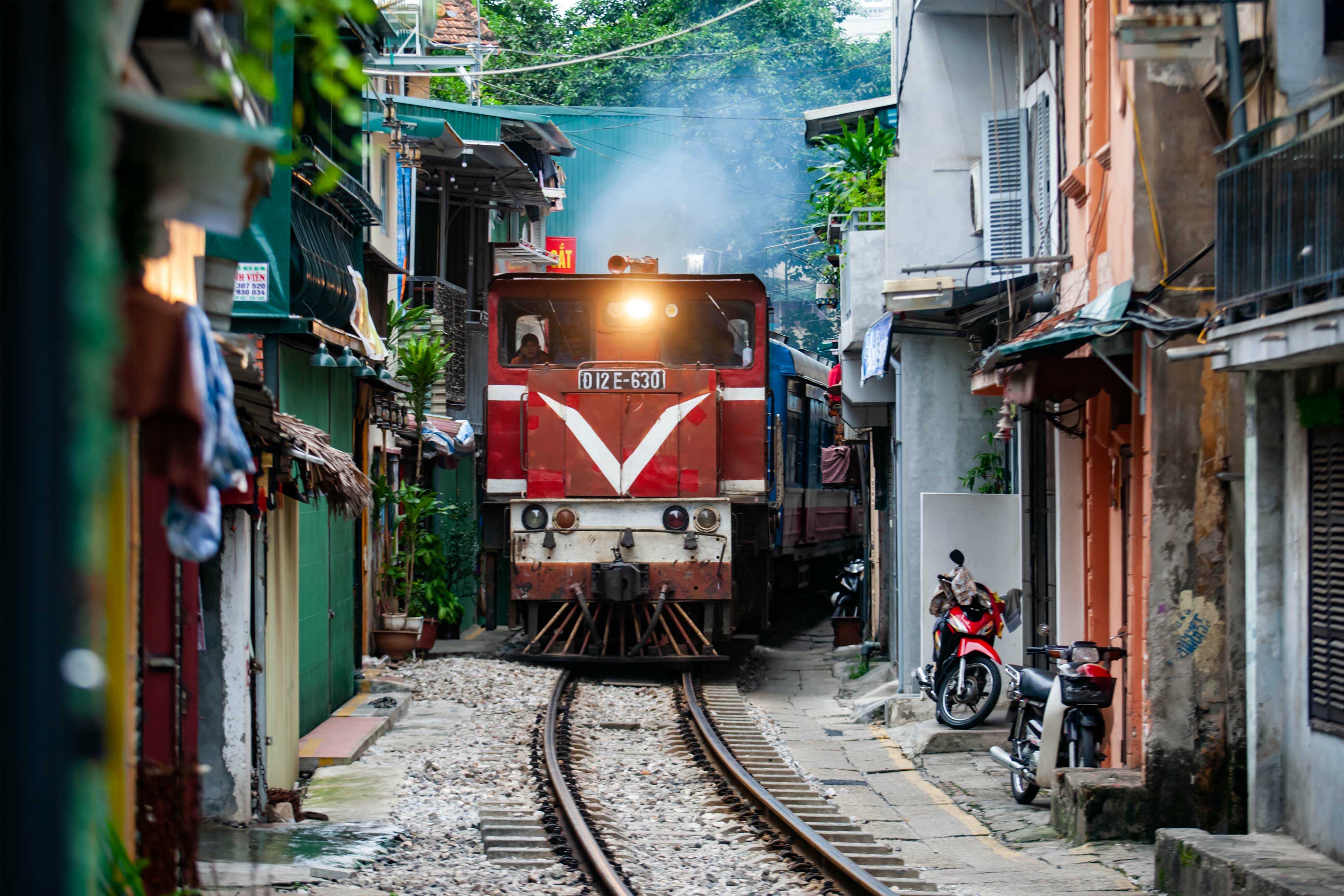Vietnam National Museum Of Nature: History, Architecture, Things To Do & Travel Guide
Step into the Vietnam National Museum of Nature, and you're entering a living story of Earth’s ancient past and Vietnam’s breathtaking biodiversity. As one of Vietnam’s top cultural landmarks, this immersive museum traces a journey from prehistoric fossils to vibrant modern ecosystems. If you're a nature lover, a curious traveler, or someone seeking a deeper understanding of the world around us, this journey offers more than facts, it sparks wonder.
What sets this museum apart isn't just the rare specimens or detailed displays. It's the way it connects you to the evolution of life itself, revealing Vietnam's ecological treasures in a way that's both educational and awe-inspiring. With GTrip’s expert guidance, your visit transforms from a simple tour into a meaningful encounter with the complexity of nature.
Introduction to the Vietnam National Museum of Nature
Location: 18 Hoang Quoc Viet Street, Ngoc Ha Ward (18 Hoang Quoc Viet Street, Nghia Do Ward, Cau Giay District, Hanoi)
The Vietnam National Museum of Nature stands as a remarkable scientific treasure. The museum occupies nearly 300 square meters within the Vietnam Institute of Science and Technology campus. Since its inauguration in 2014, this cultural and scientific gem has attracted hundreds of visitors daily. The museum showcases over 1,400 carefully curated specimens representing Vietnam's rich biodiversity and natural heritage.
Opening hours:
- Weekdays (Monday to Friday): 8:30 AM - 11:30 AM and 1:30 PM - 4:30 PM (by prior registration only)
- Weekends and holidays: 8:30 AM - 11:30 AM and 1:30 PM - 4:30 PM (open for walk-in visitors)
- Admission: Free entry for all visitors
The museum offers visitors a unique opportunity to discover Vietnam's natural wonders through diverse scientific collections. You can marvel at perfectly preserved rare creatures representing the country's fascinating wildlife spectrum. Ancient fossils dating back millions of years provide glimpses into prehistoric Vietnam's ecological past. The exhibits feature both common species and endangered animals unique to Vietnam's varied ecosystems.
Interactive displays make learning engaging for visitors of all ages and backgrounds. The museum's skilled curators have arranged exhibits thematically to tell the story of Vietnam's natural evolution. Each display combines scientific accuracy with artistic presentation to enhance the visitor experience. Photography enthusiasts will find countless opportunities to capture the beauty of Vietnam's natural diversity.
| Exhibit highlights | Description | Location in the museum |
|---|---|---|
| Rare creatures | Endangered and unique Vietnamese wildlife specimens | Main gallery |
| Ancient fossils | Prehistoric remains from across Vietnam | East wing |
| Geological formations | Rock and mineral collections from various regions | West wing |
| Biodiversity display | Comprehensive showcase of Vietnam's ecosystems | Central hall |
The museum serves multiple purposes beyond tourism as a center for scientific research and education. School groups frequently visit to supplement classroom learning with hands-on natural science experiences. The institution actively contributes to conservation awareness through its educational programs and exhibits. The museum stands as a testament to Vietnam's commitment to preserving its natural heritage.
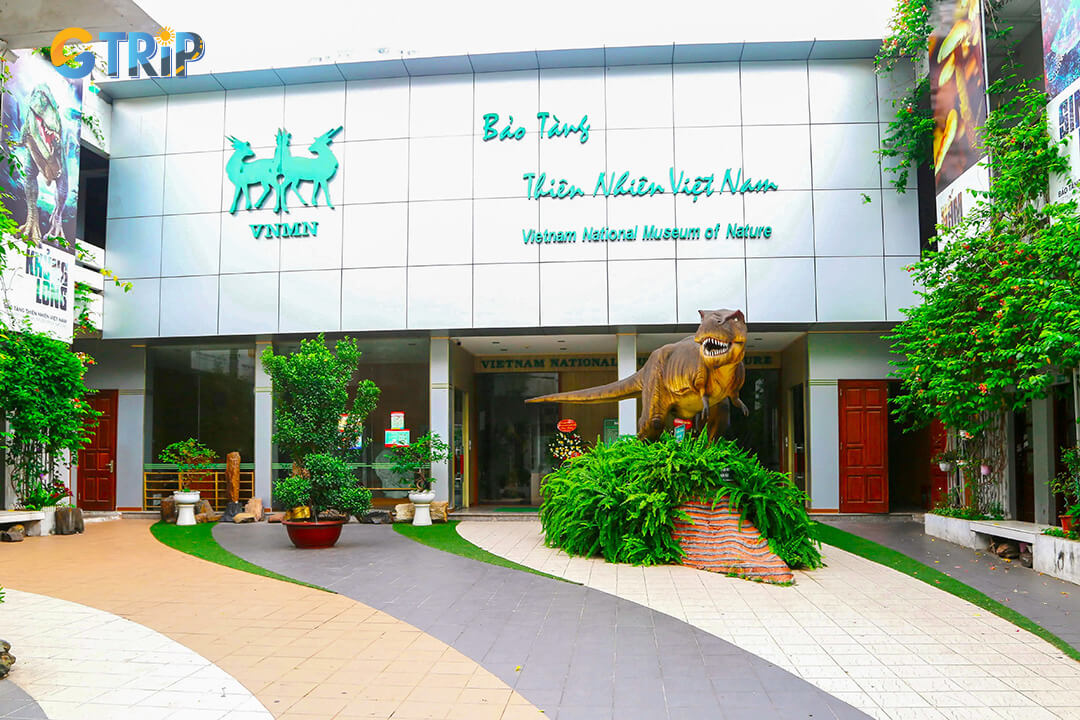
Vietnam National Museum of Nature, home to over 1,400 specimens, interactive exhibits, and free admission in Hanoi’s Cau Giay District
4 things to do in Vietnam National Museum of Nature
The Vietnam National Museum of Nature offers visitors a comprehensive journey through the country's rich biodiversity and natural history. With seven distinct display zones, rare specimens, and interactive activities, there's something to engage nature enthusiasts of all ages. Here's how to make the most of your visit to this fascinating scientific treasure trove in Hanoi.
1. Discover 7 diverse and separate display areas
Explore seven distinct and diverse exhibition zones, each offering a fascinating journey through different eras and ecosystems of the Earth. Below is a summary of the 7 main exhibition zones commonly found in the museum:
- History of life zone: Displays fossils and specimens from ancient eras such as the Cambrian to the Cenozoic, allowing visitors to follow the development of life on Earth.
- Human evolution zone: Exhibits skeletal models and evidence of human evolution from prehistoric times to the present.
- Animal world and skeleton specimens zone: Features many animal models and skeletons, especially popular with children, with an atmosphere resembling a green forest.
- Insect zone: Showcases a diverse range of insects with detailed biological features such as heads, wings, tails, and eyes, very lifelike.
- Marine life zone: Introduces shell specimens, corals, and a variety of fish from the ocean.
- Reptile and amphibian zone: Displays reptiles and amphibians from around the world, including extinct species like the Velociraptor skeleton.
- Fungi and plant zone: Exhibits various fungi and plants, along with educational films about the origins of different species.
Thus, the museum has 7 separate exhibition zones, each focusing on a different scientific and natural field. Together, they help you gain a comprehensive understanding of the diversity and history of life on Earth.
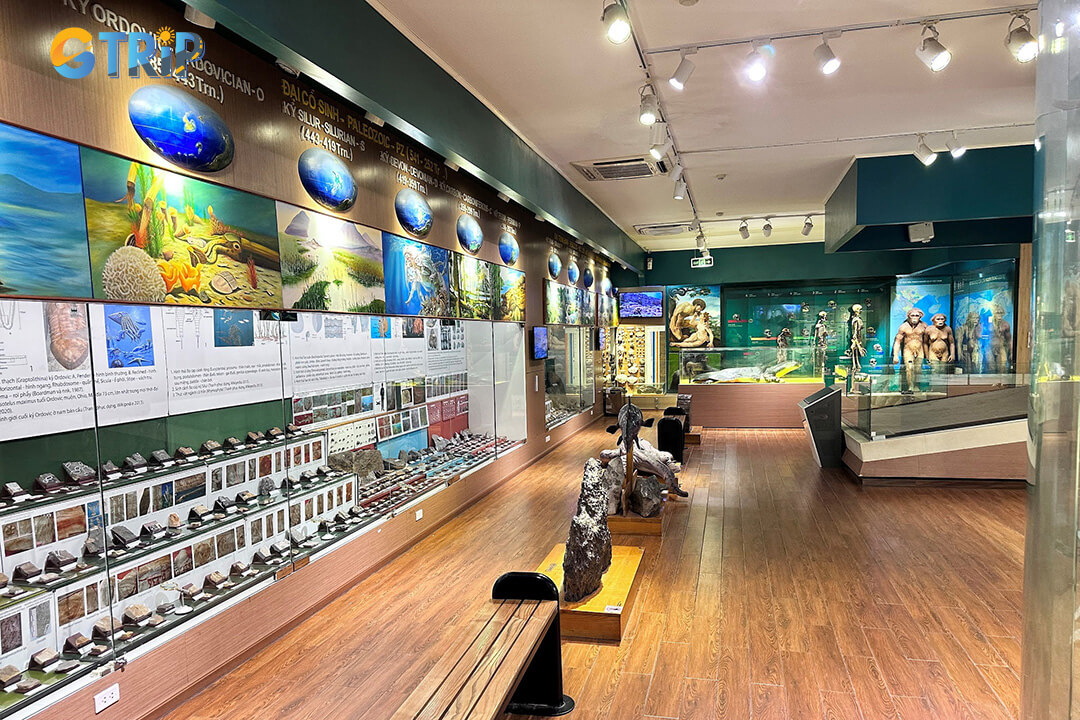
Explore seven themed exhibition zones at the Vietnam National Museum of Nature, each offering a unique window into Earth’s life forms
2. Learn about Vietnam's natural history through informative exhibits
The museum houses a remarkable collection of nearly 1,400 specimens that illustrate the life cycles of Vietnam's native mammals, reptiles, amphibians, insects, and plants. These carefully curated displays provide you with insights into the country's unique ecosystem and the biological relationships that sustain it. The museum's comprehensive collection totals an impressive 40,000 exhibits, organized by taxonomic groups:
- Over 400 mammal specimens
- 4,000 reptiles and amphibians
- 400 fish specimens
- 300 snail varieties
- 2,000 geological and paleontological samples
- 2,000 insect specimens
- More than 10,000 plant specimens
What makes the museum particularly valuable from an educational perspective is its chronological coverage of 3.6 billion years of evolutionary history. The exhibits trace life's development from the Precambrian period through to contemporary times. They provide visitors with a comprehensive timeline of biological evolution in both Vietnam and the wider world.
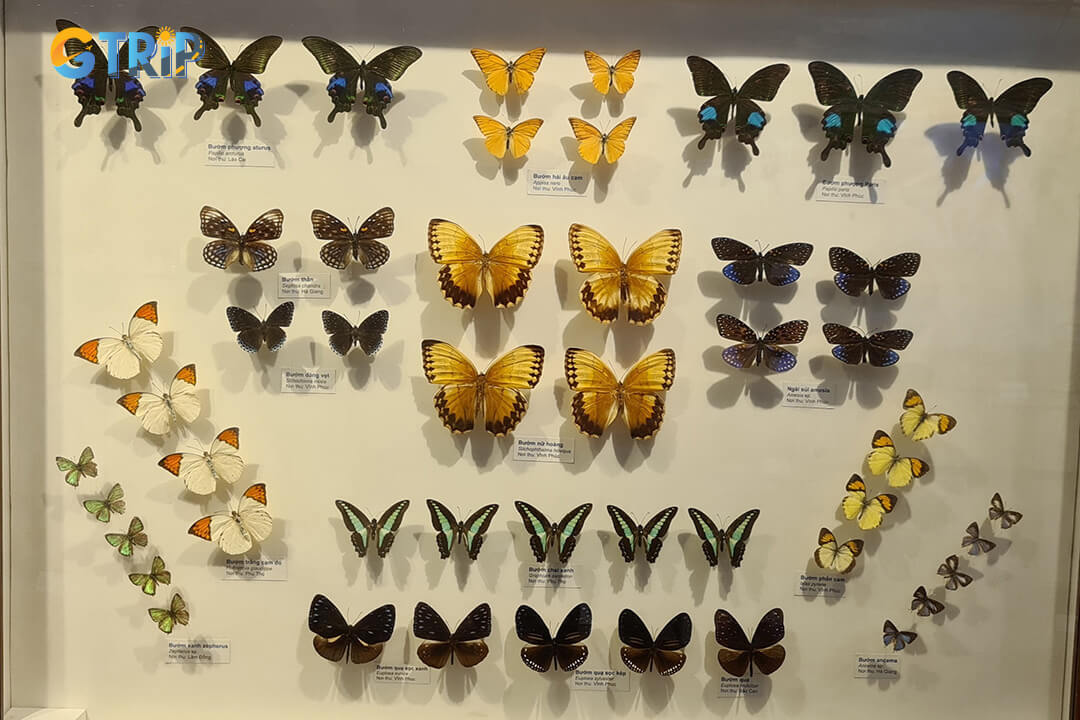
Explore nearly 1,400 curated specimens, tracing 3.6 billion years of evolution and showcasing Vietnam’s rich biodiversity across all major life forms
3. Observe rare fossil specimens and geological samples
The museum houses an exceptional collection of over 800 fossils dating between 175 and 203 million years old. These include well-preserved dinosaur bones and fossils representing four major geological development periods:
- Precambrian: Earth's earliest geological period
- Paleozoic: Featuring early invertebrates and primitive plants
- Mesozoic: The age of dinosaurs and early mammals
- Cenozoic: The rise of modern mammals and flowering plants
You can examine more than 2,000 geological and paleontological samples that provide tangible evidence of Earth's ancient history. These specimens help visitors understand how Vietnam's landscape formed and evolved over millions of years, from deep ocean environments to tropical forests.
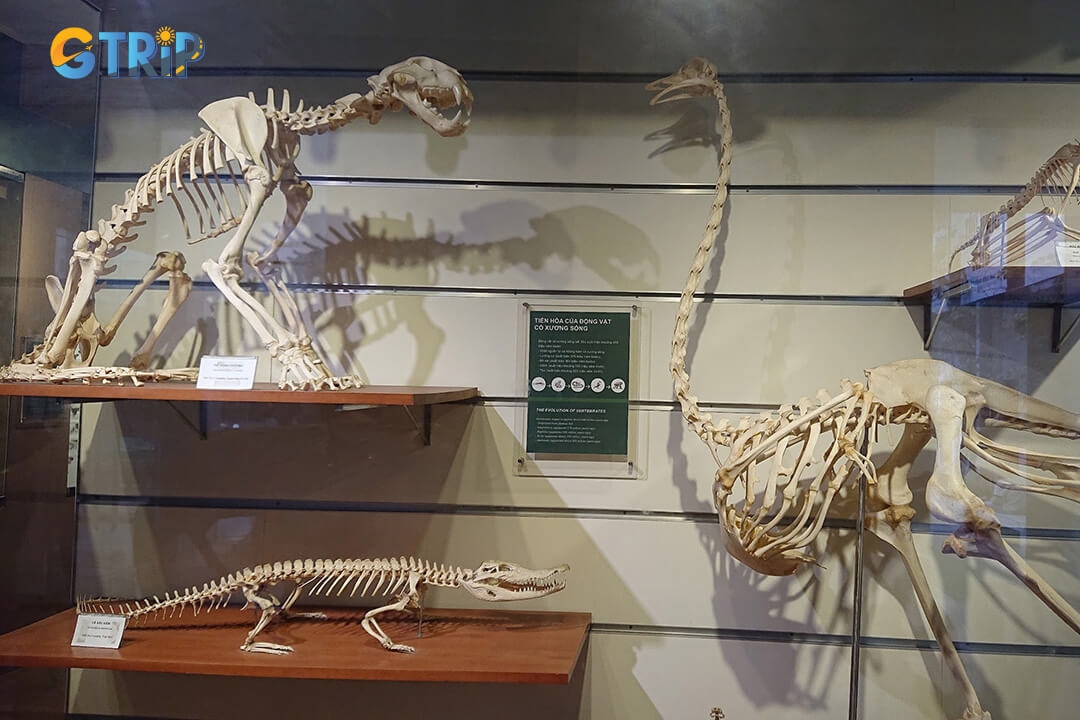
Discover over 800 ancient fossils and 2,000 geological samples that reveal Vietnam’s prehistoric landscapes and the Earth’s evolution across 4 major geological eras
4. Immersing in interactive and educational activities
The museum goes beyond static displays by offering hands-on learning experiences for visitors of all ages. Participate in specimen creation workshops where you can:
- Create your butterfly or caterpillar specimens
- Craft model dinosaur fossils
- Make insect and marine life simulations
- Build simple dinosaur robots
- Design and create animal masks
Weekend visitors can enjoy special 3D and 4D film screenings about human evolution, marine life, dinosaurs, and insects. These screenings operate on a scheduled basis when at least 15 guests are present, or by prior appointment for groups.
Throughout the museum, short educational videos and multimedia presentations complement the physical exhibits, providing deeper context and explanation. These interactive elements transform what could be a passive museum experience into an engaging educational journey through Vietnam's natural history.
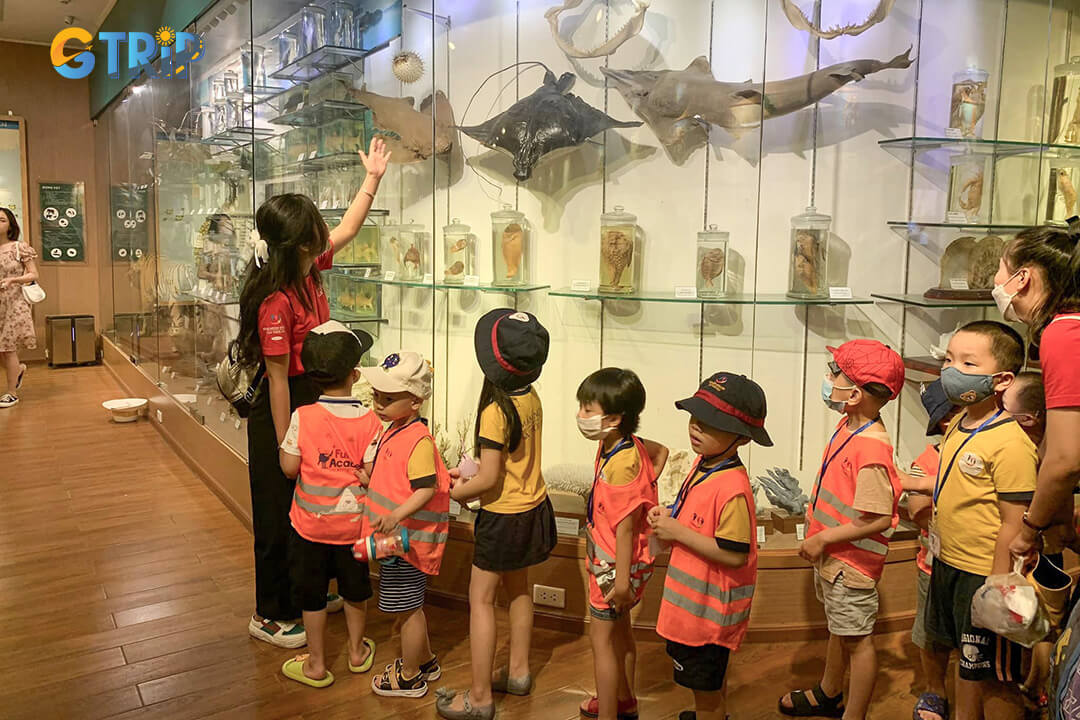
The museum offers interactive workshops, 3D/4D films, and multimedia displays that bring Vietnam’s natural history vividly to life for all ages
How to get to Vietnam National Museum of Nature?
The Vietnam National Museum of Nature is conveniently located in Cau Giay District, within the Vietnam Academy of Science and Technology campus. You have multiple transportation options to reach this educational treasure, depending on your preferences for convenience, budget, and travel experience. Here's a comprehensive guide to help you navigate your way to this fascinating institution.
By bus
Traveling by bus offers an economical and authentic way to experience Hanoi while reaching the museum. Several bus routes service the area near the Vietnam National Museum of Nature:
- Bus routes: 08, 14, 20C, 22, 26, 32, and 38
- Average cost: 7,000-10,000 VND ($0.30 - $0.45)
- Payment method: Cash only (have small denominations ready)
- Operating hours: Most buses run from 5:00 AM to 10:00 PM
The bus stop "Vietnam Academy of Science and Technology" is located directly in front of the institution, making it easy to identify your destination. Buses in Hanoi can get crowded during peak hours (7:00 - 9:00 AM and 5:00 - 7:00 PM), so plan accordingly if you prefer a more comfortable journey.
By taxi
Taking a taxi provides convenience and comfort, especially for families, those with limited mobility, or visitors unfamiliar with Hanoi's public transportation system.
| Taxi service | Starting price | Per kilometer rate | Benefits |
|---|---|---|---|
| Vinasun | 10,000 VND | 9,000 - 10,000 VND | Reliable meters, English-speaking drivers available |
| Mai Linh | 11,000 VND | 8,000 - 11,000 VND | Widespread availability, good reputation |
| Xanh SM | 12,000 VND | 9,000 - 12,000 VND | Modern fleet, booking app available |
| Grab | Variable | Market-based | Mobile booking, fixed price shown before the ride |
By motorbike or bicycle
Exploring Hanoi via motorbike or bicycle provides flexibility and an authentic local experience. The museum is accessible via several main roads, including Hoang Quoc Viet Street.
For motorbike rentals:
- Daily rental cost: 100,000 - 150,000 VND ($4 - $7) for standard scooters
- Required documents: Passport and an international driving permit
- Parking fee at museum: 5,000 - 10,000 VND ($0.22 - $0.45)
For bicycle rentals:
- Daily rental cost: 50,000 - 100,000 VND ($2 - $4.50)
- Rental locations: Many hotels and dedicated rental shops in Old Quarter
- Parking: Usually free or minimal fee
When traveling by motorbike, be prepared for Hanoi's hectic traffic. Follow local traffic patterns and always wear a helmet. For cyclists, consider using Google Maps to find less congested routes to the museum.

Vietnam National Museum of Nature offers various transport options to suit every traveler's budget and convenience
Visitor guidelines for the museum
To ensure a respectful and enriching experience at the Vietnam National Museum of Nature:
Exhibit etiquette:
- Do not touch, move, or alter any exhibits without staff permission
- Maintain an appropriate distance from displays to prevent accidents
- Follow the staff's instructions regarding photography
- Keep noise levels reasonable to respect other visitors
Photography guidelines:
- Ask permission before taking photos or videos
- Flash photography is prohibited near sensitive exhibits
- Tripods require prior approval from museum staff
- Some special exhibitions may have specific photography restrictions
Nearby attractions from the Vietnam National Museum of Nature
The Vietnam National Museum of Nature is surrounded by several fascinating attractions worth exploring during your visit. Within 1 - 2 kilometers, cultural sites, markets, and museums enrich your journey through Vietnam’s natural history. These nearby destinations offer convenient options to extend your day of exploration in Cau Giay District.
Museum of Armored Forces
Located at 108 Hoang Quoc Viet Street in the Nghia Tan neighborhood of Cau Giay District, the Museum of Armored Forces stands as an impressive tribute to Vietnam's military heritage. The museum houses an extensive collection of tanks, armored vehicles, and military equipment spanning different eras of Vietnam's defense history.
You can explore both indoor exhibition halls featuring detailed dioramas, historical photographs, and personal artifacts of soldiers. The outdoor display area showcases full-sized tanks and artillery pieces. Many of the vehicles on display were used during significant conflicts, including the Vietnam War, offering guests a tangible connection to the country's military past.
The museum provides excellent context for understanding Vietnam's strategic defence developments and technological adaptations throughout various historical periods. With informative signage in both Vietnamese and English, international visitors can fully appreciate the historical significance of the exhibits.
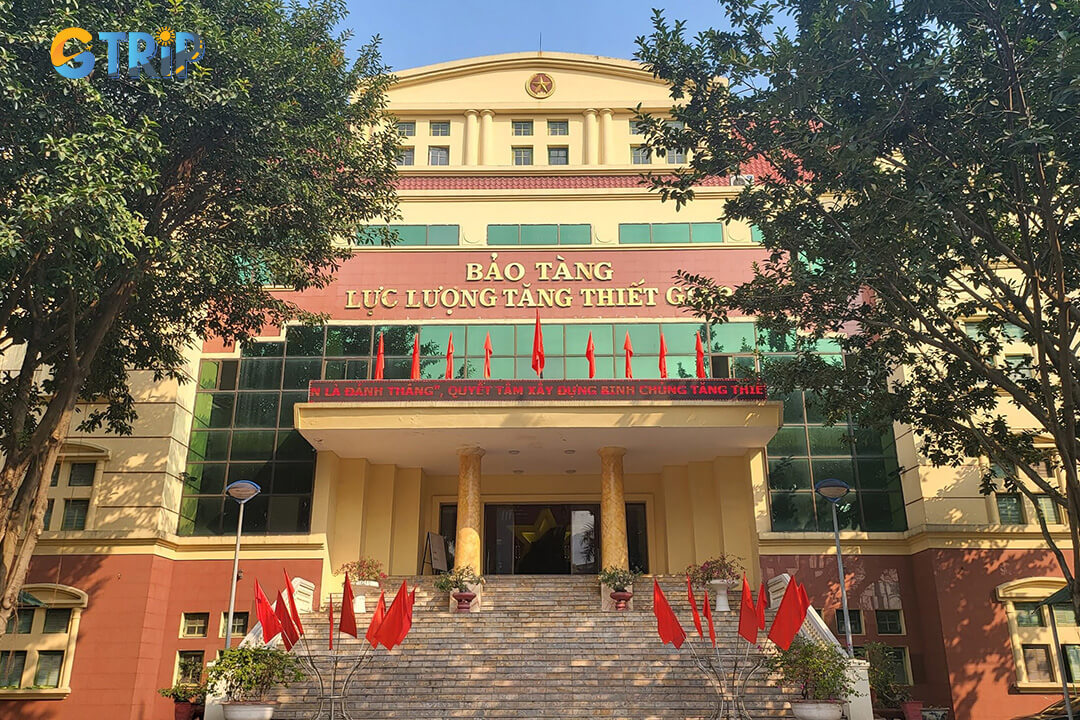
Museum of Armored Forces offers a compelling glimpse into Vietnam’s military history through its vast collection of tanks, armored vehicles, and wartime artifacts
Nghia Tan Market
Nghia Tan Market presents an authentic slice of daily Vietnamese life just a short walk from the National Museum of Nature. This bustling local market serves as the commercial heart of the neighborhood, where residents shop for fresh produce, meats, seafood, and household necessities.
Unlike the more tourist-oriented markets in central Hanoi, Nghia Tan offers a genuine local experience with vendors primarily catering to neighborhood residents. The market comes alive each morning with vibrant colors, enticing aromas, and the animated conversations of shoppers bargaining with familiar vendors.
Food enthusiasts will appreciate the market's food court section, where several stalls serve traditional Vietnamese breakfast and lunch dishes at very reasonable prices. Popular options include pho, banh mi, and com tam.

Nghia Tan Market near the National Museum of Nature offers fresh local goods and a vibrant food court with traditional Vietnamese dishes
Vietnam Museum of Ethnology
Vietnam Museum of Ethnology stands as one of Hanoi's premier cultural institutions dedicated to preserving and showcasing the diverse heritage of Vietnam's 54 ethnic groups. The museum complex combines indoor exhibition halls with an expansive outdoor architectural garden.
Inside the main building, visitors encounter meticulously arranged displays of traditional clothing, household items, agricultural tools, and ceremonial objects from ethnic communities throughout Vietnam. Each exhibit features detailed information about the history, customs, and distinctive cultural characteristics of these diverse groups.
The outdoor area features full-scale reproductions of traditional homes, including stilt houses, communal longhouses, and other distinctive architectural styles native to different regions of Vietnam. These structures are built using authentic materials and traditional construction techniques, allowing visitors to enter and explore these living cultural spaces.
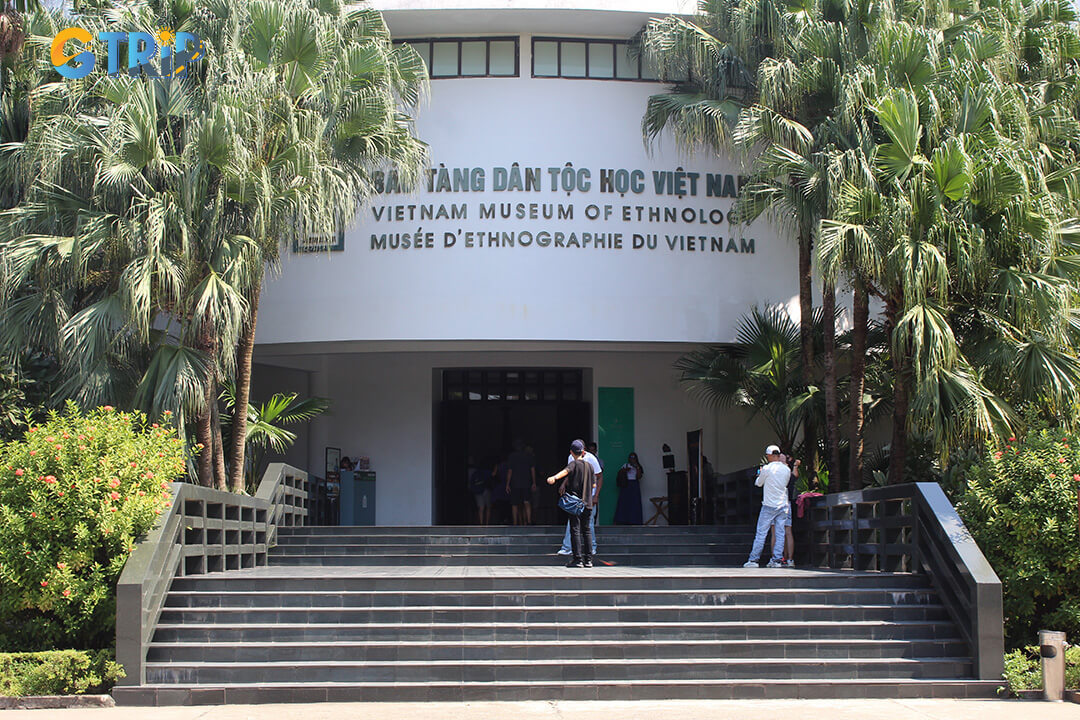
The museum showcases the rich heritage of Vietnam's 54 ethnic groups through detailed indoor exhibits and authentic outdoor traditional homes
Ha Pagoda
Ha Pagoda represents an oasis of tranquility amid Hanoi's urban landscape. This historic Buddhist temple dates back to the Ly Dynasty (11th - 13th centuries) and remains an important spiritual site for local worshippers.
The pagoda complex features traditional Vietnamese Buddhist architecture with ornately decorated roofs, wooden pillars, and intricate stone carvings. The main prayer hall houses several Buddha statues and altars where visitors can observe devotees making offerings and prayers throughout the day.
Surrounding the main buildings are peaceful gardens with ancient trees, decorative stone sculptures, and a reflective pond that contributes to the serene atmosphere. The pagoda becomes particularly lively during Buddhist festivals and the first and fifteenth days of the lunar month, when many locals visit to pray and make offerings.
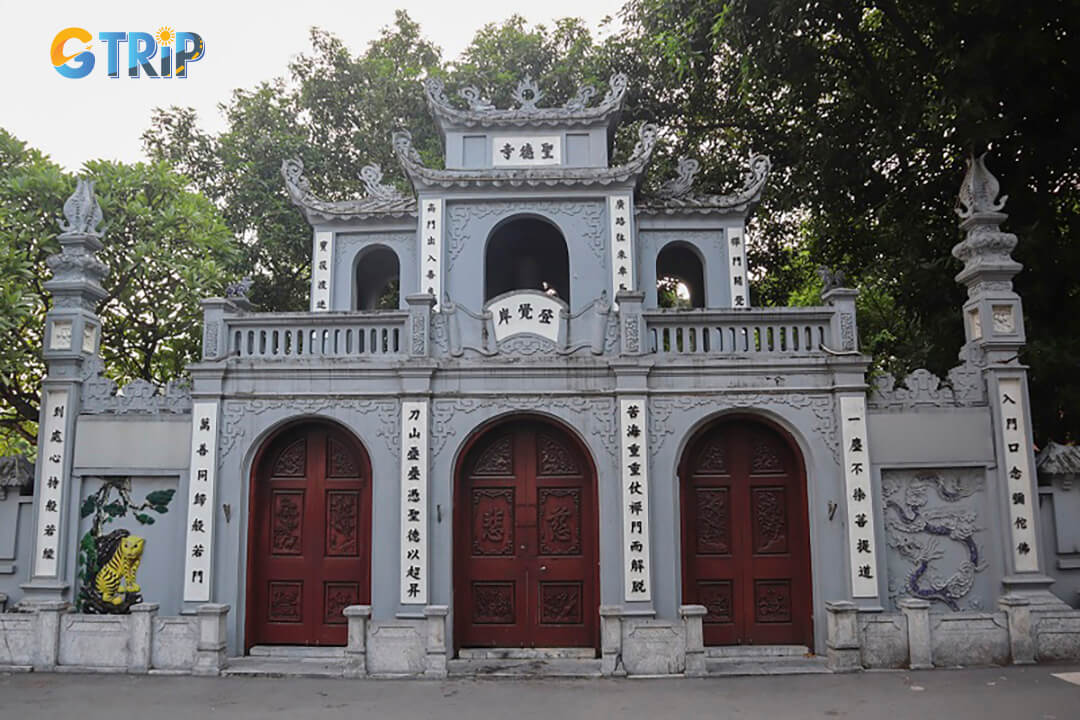
Ha Pagoda offers a peaceful retreat with traditional architecture, sacred Buddha statues, and tranquil gardens in the heart of Hanoi
Exploring the Vietnam National Museum of Nature with GTrip offers a fascinating glimpse into the diverse and rich tapestry of life that has thrived throughout the ages. This museum isn't just about observing exhibits. It's a journey into understanding our planet's past, celebrating its present, and inspiring thoughts on its future.
As visitors immerse themselves in this wealth of knowledge, they come away with a deeper appreciation for nature’s complexities and beauty. Reflecting on this experience may prompt travelers to cherish and protect our natural world more passionately. We hope your curiosity has been piqued, motivating further adventures in exploration or even sparking interest in nearby sites that equally captivate and educate. Consider keeping GTrip handy for when you're ready to uncover more hidden gems or embark on another journey filled with discovery and wonder.

